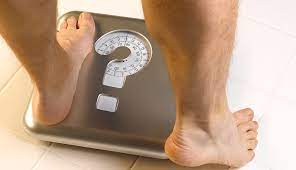Table of Contents
- Role of the Metabolism in Weight Loss
- Spicy foods boost metabolism
- Exercise increases metabolic rate
- Thermic effect of food
- Exercise reduces belly fat
- Frequently asked questions (FAQs)
- 1. What is the role of metabolism in weight loss?**
- 2. How can spicy foods boost metabolism?
- 3. Does exercise increase metabolic rate?
- 4. What is the thermic effect of food on metabolism and weight loss?
- 5. How does exercise reduce belly fat?
- 6. What exercises are effective for burning belly fat?
- 7. Can a higher metabolic rate contribute to weight loss?**
- 8. How often should I exercise to increase my metabolism?**
- 9. Are there any risks associated with increasing metabolic rate through exercise?
- 10. Where can I find more information about metabolism and weight loss?
- Related Posts
Role of the Metabolism in Weight Loss

Thermogenesis is a key part of your body’s weight-loss efforts. The role of the metabolism in weight loss is that it will increase when you eat foods with a high thermic effect. Exercise, also increases your metabolic rate, and can help you lose weight by decreasing your belly fat. Listed below are several tips for increasing your metabolism. Make sure you read these tips carefully to make the most of this important factor in your weight-loss efforts.
Spicy foods boost metabolism
You’ve probably heard about the power of spicy food in weight loss. The heat in spicy foods can speed up the metabolism and burn fat. These foods contain capsaicin, a natural substance that stimulates the brain’s sympathetic neurons, a type of nerve fiber responsible for fat oxidation. Consuming spicy foods can boost your metabolism by as much as eight percent. And because they can make you feel full faster, they’re a great option for reducing calorie intake.
One of the best ways to boost your metabolism is by eating spicy foods. Spicy foods contain capsaicin, a chemical that increases your body’s temperature, which increases your metabolism. These foods also make you feel fuller longer, which means you’ll be eating fewer calories. A study at Penn State University found that eating spicy foods increased men’s blood results by over 200 calories. But the benefits of spicy foods don’t end there.
Exercise increases metabolic rate
Metabolism is a process by which our body converts food into fuel. When we exercise, our metabolism increases. Inactivity slows down this process. The higher the metabolic rate, the more calories we burn and the less likely our body will store energy as fat. But we all need more calories to lose weight. Intensive exercise increases metabolic rate. This type of exercise increases the heart rate, which boosts the amount of energy your body can burn.
To burn fat, you should perform aerobic exercises at least three times a week. A moderate exercise program that lasts 15 minutes can help you burn approximately one hundred extra calories per week. This equates to walking one mile in a week. This can result in approximately 10 pounds of weight loss in a year. However, if you exercise vigorously, you might end up hurting yourself. Regardless of your age, it is always best to consult with your doctor before starting an exercise program.
Thermic effect of food
What is the thermic effect of food on metabolism and weight-loss? It is the process by which foods increase energy expenditure during the metabolism process. Foods with the highest thermic effect are protein and carbohydrates, while those with the lowest are fats. Each of these groups has different thermic effects, depending on the energy they require for digestion. However, the thermic effect of foods varies significantly, so eating a variety of foods may help you achieve your weight loss goals.
Moreover, consuming foods with a high thermic effect may boost energy expenditure during digestion. A diet rich in soluble fiber can help control appetite and eliminate unwanted fat. Grapefruit is another fruit with a thermic effect, and wild-caught seafood is also a good choice. These foods are rich in omega-3 fatty acids, and their high protein content stimulates the body’s metabolism.
Exercise reduces belly fat
If you’re looking for ways to burn belly fat, you’ll find several types of exercises here. The plank jack, a full-body exercise that works your chest, shoulders, hips, and core, improves your strength and burns a significant amount of calories, is a great choice. Knee bending is another low-impact activity that helps reduce belly fat and improves strength and endurance. Another effective lower abs exercise, the leg drop, flattens your stomach and strengthens your hips and lower back.
Although it may seem hard to believe, abdominal obesity is a major indicator of metabolic syndrome. Research has also shown that regular cardio sessions can help burn this type of fat. In fact, according to a study published in 2011, cardio exercises led to a higher percentage of belly fat loss. If you are interested in getting rid of belly fat, start today! If you don’t exercise, you’re setting yourself up for failure. You must be consistent with a regular routine and see results quickly.
Frequently asked questions (FAQs)
1. What is the role of metabolism in weight loss?**
Metabolism plays a crucial role in weight loss. It refers to the process by which your body converts food into energy. A higher metabolic rate can help burn more calories, making it easier to lose weight. Understanding and optimizing your metabolism can be beneficial for your weight-loss efforts.
2. How can spicy foods boost metabolism?
Consuming spicy foods can increase your metabolism. Spicy foods contain capsaicin, a natural substance that stimulates the brain’s sympathetic neurons responsible for fat oxidation. This can result in an up to eight percent boost in metabolism. Additionally, spicy foods can make you feel fuller faster, aiding in calorie reduction.
3. Does exercise increase metabolic rate?
Exercise has a direct impact on increasing your metabolic rate. When you exercise, your body’s metabolism speeds up, leading to a higher calorie burn. Engaging in regular physical activity helps maintain a healthy metabolic rate and can contribute to weight loss by burning more calories and reducing body fat.
4. What is the thermic effect of food on metabolism and weight loss?
The thermic effect of food refers to the energy expenditure during the digestion and processing of different types of food. Protein and carbohydrates have a higher thermic effect compared to fats. By consuming foods with a higher thermic effect, you can potentially increase energy expenditure and support weight loss efforts.
5. How does exercise reduce belly fat?
Regular exercise, including targeted abdominal exercises, can help reduce belly fat. Activities such as the plank jack, knee bending, and leg drop specifically work the abdominal muscles and contribute to reducing belly fat. Additionally, engaging in regular cardio exercises, such as jogging or cycling, can also help burn overall body fat, including belly fat.
6. What exercises are effective for burning belly fat?
There are several exercises that can help burn belly fat. The plank jack, knee bending, and leg drop are effective exercises that target the abdominal muscles and contribute to reducing belly fat. Additionally, engaging in regular cardio exercises, such as jogging or cycling, can also help burn overall body fat, including belly fat.
7. Can a higher metabolic rate contribute to weight loss?**
Yes, a higher metabolic rate can contribute to weight loss. A faster metabolism allows your body to burn calories more efficiently, making it easier to create a calorie deficit and lose weight. However, it’s important to note that factors like diet, exercise, and overall lifestyle choices also play a significant role in achieving sustainable weight loss.
8. How often should I exercise to increase my metabolism?**
To increase your metabolism, it’s recommended to engage in regular exercise at least three times a week. A combination of cardiovascular exercises, strength training, and targeted abdominal exercises can help boost your metabolic rate and support weight loss. It’s important to find a balance that suits your fitness level and consult with a healthcare professional or fitness trainer for personalized guidance.
9. Are there any risks associated with increasing metabolic rate through exercise?
While exercise is generally safe and beneficial, it’s important to approach it
gradually and listen to your body. Intensive exercise without proper rest and recovery can increase the risk of injuries or overtraining. It’s crucial to warm up, cool down, and use proper form during exercises. If you have any underlying health conditions, it’s advisable to consult with a healthcare professional before starting or modifying an exercise program.
10. Where can I find more information about metabolism and weight loss?
For more information about metabolism and weight loss, you can refer to reputable sources such as:
– [Harvard Health Publishing](https://www.health.harvard.edu/diet-and-weight-loss/does-metabolism-matter-in-weight-loss)
– [Rush University Medical Center](https://www.rush.edu/news/how-metabolism-really-works)
– [The Ohio State University Wexner Medical Center](https://health.osu.edu/wellness/exercise-and-nutrition/how-to-lose-weight-without-tanking-your-metabolism)
– [National Center for Biotechnology Information (NCBI) – Bookshelf](https://www.ncbi.nlm.nih.gov/books/NBK572145/)
References
https://www.health.harvard.edu/diet-and-weight-loss/does-metabolism-matter-in-weight-loss



